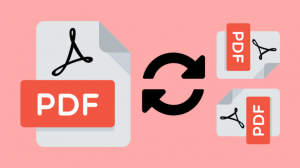If you’re trying to figure out how to use an SFP28 cable, but are not sure where to begin. You should not feel isolated. Because of the rapid pace at which technology advances, you may occasionally come across instruments and gadgets that are foreign to you. Nonetheless, knowing how to work with an SFP28 cable is essential in several fields. Let’s get into the fundamentals and get you rolling.
When to Use an SFP28 Cable
SFP28 cable is a high-speed data transmission line deployed in various contexts. You need to know when to utilize this wire to get the most out of your network or system.
High Bandwidth Requirements
SFP28 cables are ideal for situations requiring high computing capability and a lot of data transfer speed. Because these cables can support data transmission speeds of up to 28 Gbps, they are ideal for usage in data centers and other situations requiring high computing capability.
Distance Limitations
The distance limitations of your current network or system are another important factor to consider when deciding whether or not to use SFP28 cables. You may get SFP28 cables in lengths ranging from 1 meter to more than 30 meters. The best signal quality and preventing signal deterioration over longer distances may be achieved by selecting the ideal length for your application.
Compatible Devices
Last, but not least, make sure your gadgets work with SFP28 cords. The SFP28 transceivers utilized with these cables may be used with a wide range of switches, routers, and servers. It is essential, however, to double-check the cables and gadgets you want to use to guarantee a smooth connection.
How to Use SFP28 Cable
Data centers and networking applications both make extensive use of SFP28 cable, which is a high-speed connection used for data transmission. Knowing how to utilize SFP28 cables properly is crucial for achieving peak performance and avoiding cable breakage.
Understanding the Different Types of SFP28 Cables
Active optical cables, passive optical cables, direct attach copper cables (DAC), and a variety of other types of SFP28 cables are all commercially available (AOC). Understanding the differences between these types of cables can help you select the best one for your needs.
Proper Installation
Make sure the SFP28 cable is inserted correctly before using it. Ensure the cable is plugged into the right port, the connection is lined up correctly, and the cable is secured so it won’t come unplugged.
Maintenance and Handling
An SFP28 cable requires regular maintenance and careful handling for optimal performance and reliability. Do not exert undue stress on the cable or bend it more than necessary to keep it from breaking. Keep the connections clear of dust and other debris for optimal performance.
Choosing the Right SFP28 Cable for Your Networking Needs
Networking Device Compatibility
Making sure an SFP28 cable is compatible with the networking gear in use is one of the most crucial steps before installing one. Various gadgets may have a wide range of compatibility needs and restrictions. When purchasing a cable, make sure the equipment’s specs are compatible with the cables. If you use a cable that isn’t designed for your device, you risk malfunctions or even harm.
Length and Attenuation
Another critical aspect is the cable’s length. The attenuation of the signal due to cable length can reduce transmission speeds and introduce mistakes. It is vital to consider the attenuation of the signal and select a cable length that is suitable for the intended use.
Environmental Factors
The SFP28 cable’s intended usage environment is another factor to think about. Exposure to elements such as moisture, dust, or severe temperatures can impair the cable’s functionality. Selecting a cable with the right protective coatings and jackets helps guard against damage from these elements and guarantee peak performance even in challenging settings.
Conclusion
An integral part of modern high-speed data transfer and networking infrastructure is the SFP28 cable. It finds widespread use in data centers and other places requiring rapid data transfer. Its interoperability with other networking components and its capacity for 28 Gbps data transmission makes it an invaluable addition to any network. Distance, power budget, and compatibility with other networking components are all things to consider before committing to an SFP28 cable. By keeping these factors in mind, companies and other entities may make the most of the SFP28 cable and guarantee uninterrupted high-speed data transmission.
Follow TechRado for more!





